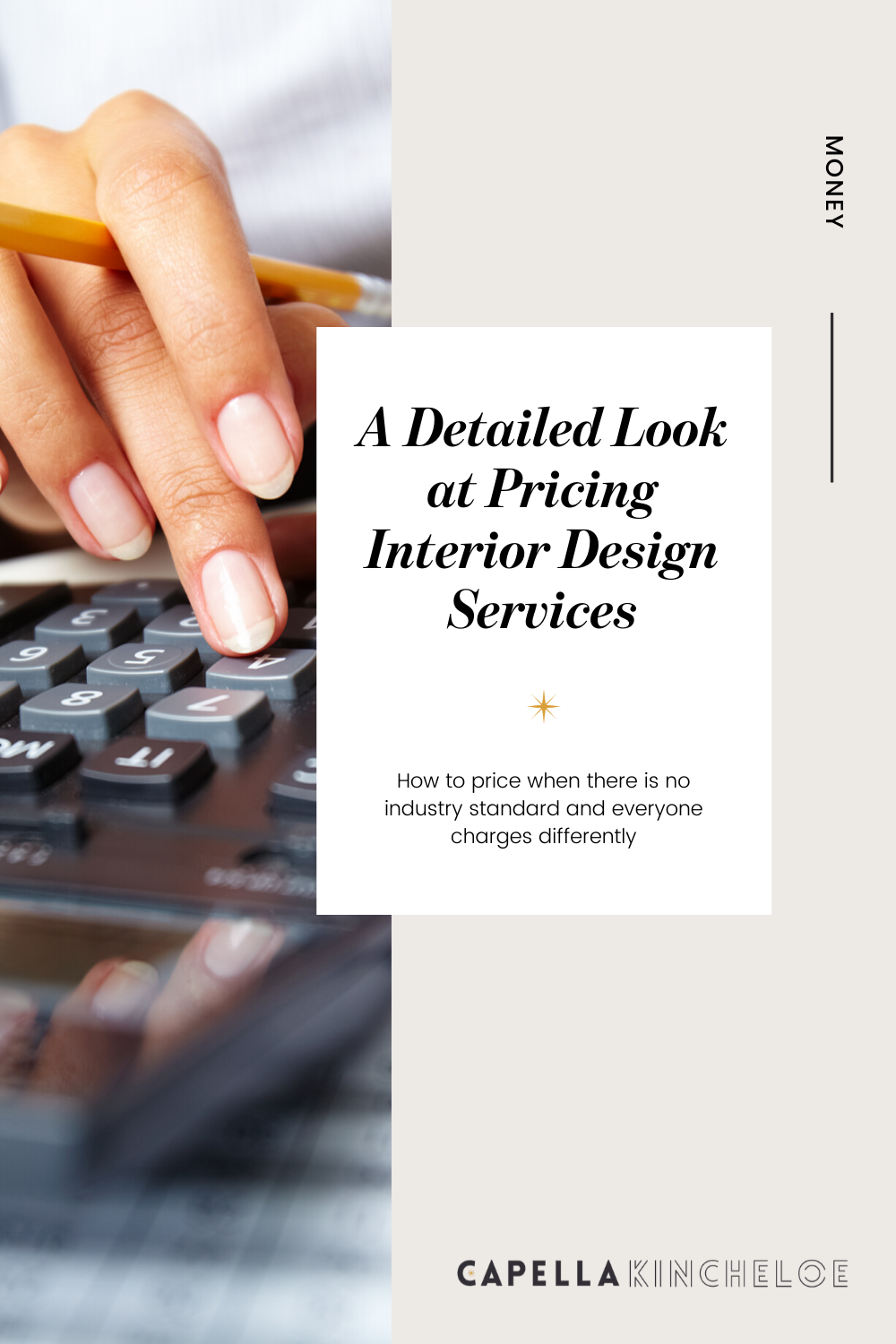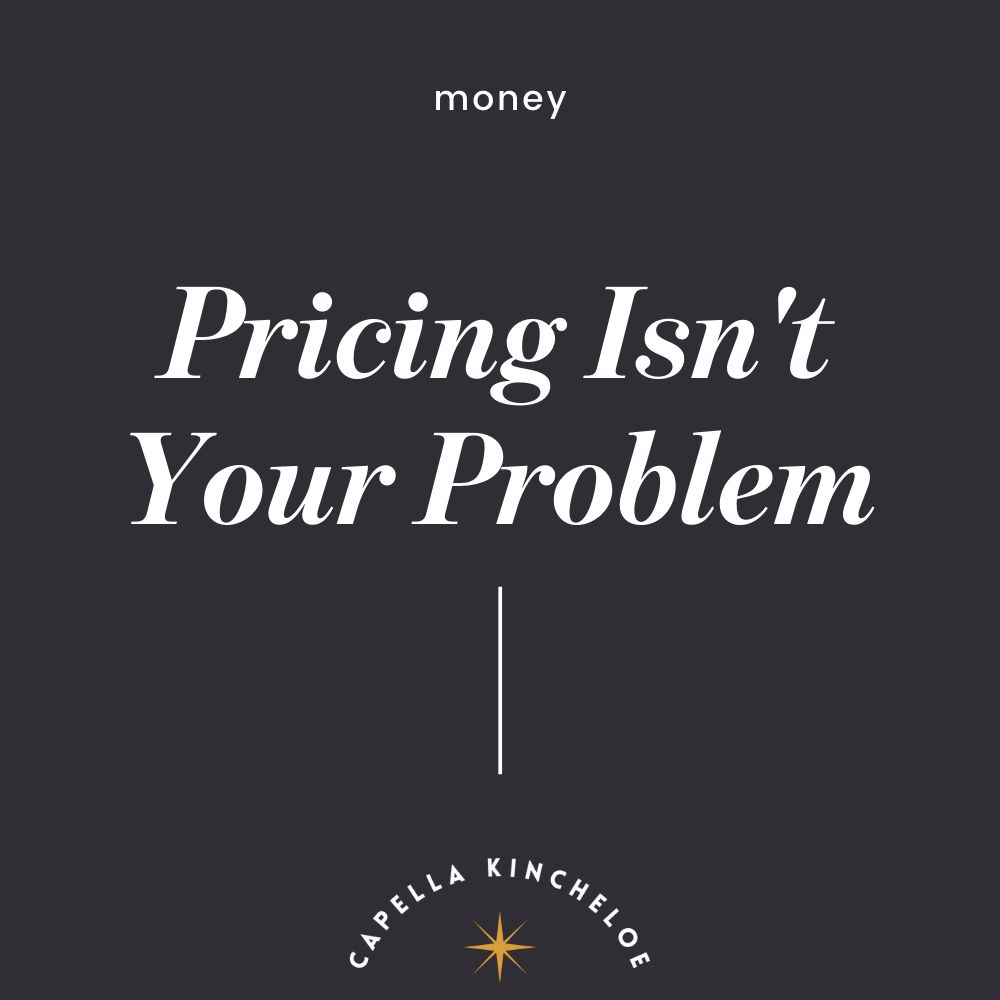A Detailed Look at Pricing Interior Design Services
How do Interior Designers price their services? How should you price your services?
Unlike architects or realtors, there is no regulating body for interior designers. Therefore, there are about as many different pricing structures as there are interior designers. There is not a one size fits all for designers or clients, the bottom line is do you feel comfortable and confident in your pricing model?
Despite which one you use, the following pricing models are how designers make money. This is how we stay in business and provide our services to clients. We all deserve to get paid for the work that we do. Fees are based on experience, expertise, talent, demand, geography, education, and other factors. Remember that these fees aren't just to cover your time. When you run your own business you are not an hourly employee, those fees that you charge clients need to cover your overhead, things like: insurance, internet, phone, salaries, office supplies, gas, licenses, continuing education, business development, website, computer, and a million other things.
Interior Design Service Pricing
Flat/ Fixed/ Design Fee:
One rate for the entire project. Typically, this does not include furniture and other items but is the price for the designer’s work and time on the project. The exact scope of the project and what the flat fee includes should be spelled out in the contract. This is sometimes called a Design Fee. This fee is calculated by any number of factors like experience, square footage, estimated time and budget.
Example: $10,000.
Cost-Plus/ Markup:
The client pays the cost of an item plus a percentage markup. The cost of the item can be what the designer pays (designer’s net) or it could be retail. Some designer’s markup percentages change for different types of purchases: rugs, antiques, accessories, etc. Just make sure this is spelled out in your agreement.
Example: $8999 (retail) minus designer discount of 40% = $5399.40 (designer’s net) x 35% markup = $7289.19 (cost-plus, client price). Example #2: $460 (retail) minus designer discount of 10% = $414 (designer net) x 35% markup = $558.90 (cost-plus, client price).
Retail:
A variant on the cost-plus model, this has the designer’s fee built-in. The designer pays the designer net price, and the client will always pay retail and the designer’s fee is the difference. The designer will not always receive the same percentage, depending on the designer discount.
Example: $8999 retail minus $5399.40 (designer’s net) = $3599.60 (designer’s fee). Example #2: $460 (retail) minus $414 (designer net) = $46 (designer’s fee).
Hourly:
A client will pay the designer for each hour worked on the project. Rates can range from $50-$300 and is based on location, experience, and talent. It's never smart to choose the cheapest option, though a designer may charge $100 an hour, it may take them half as long as the person who charges $75 an hour. Larger firms will likely have a tiered hourly rate for the different job positions that will be working on a project. The CAD person will be billed at a different hourly rate than the pricipal designer. If you charge hourly, charge for every minute you're working on the project: emails, phone calls, ordering, logistics, troubleshooting, delivery/installation, meetings, shopping, designing/drafting, purchasing and procurement, driving, sample returns. My rule is to charge for any time that you touch that project.
Example: $100 an hour x 45 hours - $4500.
Square Footage:
More typical for commercial spaces or new construction clients pay a price per square foot.
Example: $45 sq ft for 2500 sq feet = $112,500.
Percentage of Budget/ Amount Spent:
When the budget is established at the beginning of the project, the designer’s fees are a percentage of that budget. This is similar to a Flat Fee but is not capped. At the end of the project the items are totaled and the client pays a percentage of the total amount spent. Usually the designer has charged installments based on the expected budget.
Final Budget: $61,392 x 20% = $12,278.40.
Often the way interior design is priced is a combination of the above structures. Remember the bottom line: Do you feel comfortable and confident with your pricing model?
Don’t Miss the Ultimate Interior Design Pricing Guide!
About the Author
Hi! I’m Capella and I’m an interior designer who helps fellow designers build their businesses. Forget secrecy and competition, I believe designers should support and uplift each other. By helping and boosting one another, we can elevate the business of interior design together! Hang around a bit and I’ll share all the business “secrets” no one else wants to talk about.














